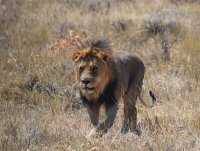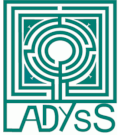Home > Partner network > Cystic echinococcosis in Africa

Cystic echinococcosis in Africa
CESSARi 2009-2025: context
Cystic echinococcosis (CE) of humans, livestock and wild mammals can be caused by different cryptic species of the Echinococcus granulosus complex. Biological and clinical features of these species are still insufficiently known, but new molecular tools are now shedding light on their geographical distribution, pathogenicity, host range and impact on public health. New insights in the involvement of wild mammals in the lifecycles help us to understand the epidemiology and biogeographical history of these parasites.

Sub-Saharan Africa is home to the largest diversity of CE agents in the world, and the disease places an enormous burden especially on traditional pastoralist societies. Next to dogs and livestock, numerous wild mammal species are involved in the transmission of echinococcosis, and at least one species – Echinococcus felidis – is regarded as a primary wildlife parasite of lions and their prey. However, data from most African regions are still anecdotal, and even in the better researched countries the specific identity of these pathogens is/was not known. Since 2009, the CESSARi programme, funded by the German research agency (DFG), has started to coordinate and focus research capacities in various African countries towards a concerted study of the molecular epidemiology of echinococcosis, ranging from the estimation of general disease burdens to the identification of local transmission routes.
 Current and past members of CESSARi are three institutions in the Sudan (Universities Al-Neelain and Gezira, Central Veterinary Laboratories), three in Kenya (Kenya Medical Research Institute, African Medical & Research Foundation, Meru University of Science and Technology), and one each in Uganda (Makerere University), Zambia (University of Lusaka), Namibia (University of Namibia) and South Africa (University of the Witwatersrand). The network gets additional cooperation from researchers in Namibia, Ethiopia and Ghana. German counterparts are the Universities of Hohenheim and Ulm.
Current and past members of CESSARi are three institutions in the Sudan (Universities Al-Neelain and Gezira, Central Veterinary Laboratories), three in Kenya (Kenya Medical Research Institute, African Medical & Research Foundation, Meru University of Science and Technology), and one each in Uganda (Makerere University), Zambia (University of Lusaka), Namibia (University of Namibia) and South Africa (University of the Witwatersrand). The network gets additional cooperation from researchers in Namibia, Ethiopia and Ghana. German counterparts are the Universities of Hohenheim and Ulm.
According to current data, human CE prevalence in pastoralists appears unchanged for the past 35 years, and is much more prevalent than expected in the Sudan and South Africa. The disease agents are diverse: in Kenya and South Africa E. granulosus sensu stricto (with sheep as the principal livestock hosts) is most frequent, E. canadensis (transmitted by camels and goats) dominates in central and northern Sudan, and E. ortleppi (with cattle as hosts), usually very rare, seems to be widespread in livestock in central Kenya, western Zambia and throughout Namibia.
 Concerning the situation in wildlife, molecular data suggest that there is introgression from the domestic dog-sheep, dog-cattle and dog-camel cycles into wild predators and herbivores of various conservation areas, while original lion parasites – although frequent where lions still exist – were not yet found in domestic animals. E. equinus, known as a domestic parasite of worldwide distribution which seems to be specific for equids in the cyst stage, was found to be a frequent wildlife parasite of lions, jackals and zebras in Namibia, but has yet to be observed in wild mammals of eastern Africa.
Concerning the situation in wildlife, molecular data suggest that there is introgression from the domestic dog-sheep, dog-cattle and dog-camel cycles into wild predators and herbivores of various conservation areas, while original lion parasites – although frequent where lions still exist – were not yet found in domestic animals. E. equinus, known as a domestic parasite of worldwide distribution which seems to be specific for equids in the cyst stage, was found to be a frequent wildlife parasite of lions, jackals and zebras in Namibia, but has yet to be observed in wild mammals of eastern Africa.
Eventually, the data gathered in seven African countries are expected to provide a conspectus on the relative impact of different species of parasites and hosts on public health, economic burdens and conservation issues.


Current project phase
Objectives
- Correlations of Echinococcus genotypes with geographical distribution, host preference and infectivity / pathogenicity to humans
- Identification of wildlife-based cycles and their interaction with ’domestic‘ echinococcosis cycles
- Transmission ecology
- Impact on public health and economy
- Exploratory surveys in data deficient countries
Other aims: training, networking and capacity building

November 9-13, 2022: kick-off meeting of the current project phase in Namibia


Contacts:
- Thomas Romig
- Marion Wasserman
Department of Parasitology
Hohenheim University
Read more...









